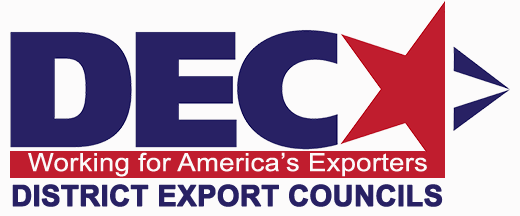Some degree of risk is inherent to all business ventures, and exporting is no exception. The best way to manage risk is to do your homework in advance, and then taking prudent counter-measures.
 (Please read-on, or if you prefer click here for a video on the subject.)
(Please read-on, or if you prefer click here for a video on the subject.)
Three export risk types
To better understand trade risk, we must first examine the three broad types of risk associated with exporting: country risk, transactional risk, and buyer risk.
1. Country risk
Under the general heading of country risk, there are three sub-categories:
• Political risk , as happened in the 1970s when Moammar Qaddafi nationalized all of the oil infrastructure in Libya.
• Economic risk , for example when a foreign currency’s value plummets, especially if you are not getting paid in US dollars.
• Military or conflict-related risk
The companies that offer country risk insurance track and quantify country risk in order to set their premium rates. For example, Coface Insurance publishes country risk ratings on their website home page, and even offers an interactive and downloadable country risk map there. (see below) The Export Import Bank of the United States (EXIM Bank) rates country risk as well, using their Country Limitation Schedule.

2. Transactional risk
The second broad category of risk is related to the actual export transactions. Here, foreign bureaucracies may obstruct trade business. They may:
• Require confusing special permits and certificates
• Impose excessively high import tariffs, taxes, or fees
Recognizing the significance of these transactional barriers to trade, the US government has established the Trade Information Center, in Washington DC, which maintains current information on the subject. You can call them at 1-800-USA- TRADE. They have the very latest on import duty and tax rates, trade agreements, quotas, permits, and embargoes, etc.
However, be aware that you must first obtain the harmonized code for your product (also called the HS code, or Schedule B number) before seeking their advice. This can most easily be done using a keyword search on the “Schedule B Search Engine,” which is operated by the U.S. Census Bureau.
3. Bank and buyer risk
This type of risk can occur if your customer:
• Uses an unfamiliar language that makes it difficult to understand the precise terms of a sale. (English speakers find verbal communication most difficult in Asia, where they cannot even phonetically sound-out words from text.)
• Selects an unsound foreign bank to manage your payment
• Doesn’t use INCOTERNS that precisely assign shipping responsibilities and costs.
• Simply Fails to Pay You!
Of course, you can completely avoid this sort of risk by demanding 100% payment up front, but may not find that acceptable. Fortunately, you can now check a customer’s credit rating online. For example, Dun and Bradstreet offers this service for many countries on it’s website. Foreign banking institutions ratings are available from Fitch Ratings. Of course, it is vital to chose appropriate payment terms for the market and customer with whom you are dealing.
Developing a risk management matrix
You may find it helpful to create a “Risk Management Matrix” like the one below to clarify your thinking on the risks you face, and how you plan to manage them. It can be an appendix to your Export Plan.


Grading risks helps you to focus on critical areas and to mitigate them before they become a crisis. For example, if all of your export business is with a single client in Australia, and it goes bankrupt, the outcome could be a disaster. But if the risk of non-payment is low, your risk ranking would be medium, so this might just require monitoring.
Personal security
Take adequate and sensible security precautions when you travel to foreign markets. Check the U.S. State Department website for any alerts or precautions.
In certain countries, you need to be aware of cultural or religious restrictions. Not sticking to these rules could place you at significant personal risk, for example, importing or consuming alcohol in the Mideast.
(For more information on risk, please view our webinar on the subject.)
